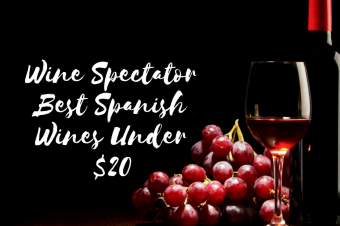You would not think purchasing a bottle of wine would be daunting. It should be simply a matter of entering a store, picking a bottle, paying for it and leaving. Yet, somehow or other, buying a wine does not seem simple. It tends to garner an air of difficulty. You can remove this “fear of wining” if you prepare yourself before you set off to purchase that particular bottle of wine.
SELECTING WINE
Before you go off to buy a bottle of wine, you need to do a few things. You must prepare yourself for the experience. This will make wine shopping not only easier but also pleasant and even enjoyable. Wine shopping should bring as much pleasure to you as opening and drinking the wine.
Why are you buying a bottle of wine
First, you need to consider the question why. Why am I buying a bottle of wine? Is it for a party? Am I celebrating a special event or occasion? Do I want something to go-with my meal? Is it for a dinner party, a drink’s party or an informal gathering? Am I buying wine for a wedding, an anniversary or any other special celebration?
Each event may require a different wine. For a drink’s party, you could choose a South African Chenin Blanc or a Spanish White. These are softer, lighter styles of wines. For a dinner party, you might want to buy different wines. You can have a dry, white wine as an aperitif and either a red or white for dinner. You might even want to serve a dessert or fortified wine afterwards. As for a wedding – good choices include champagne or any sparkling wine as well as several table wines.
How much can you afford?
Once you have decided the purpose for buying wine, you need to look carefully at price. How much can you afford? Wine prices range across the entire spectrum. They can be inexpensive bag or jug wine and medium-priced table wines. Wines can also be extremely expensive. You can pay anywhere from a few to hundreds of dollars for a bottle of wine.
Where to puchase your wine?
With an idea of what wine you want and how much you can afford to pay, you now can consider the retailer. Where are you going to purchase your wine? There are various options. They include supermarkets, grocery stores, wine shops, wineries, auctions and catalogues. There is also the internet. Each of these provides you with the chance to learn how much you do and do not know about wine. Be sure you understand this before you decide where to shop.
As a newbie, you are unlikely to be ready to purchase wines at auction. Wine here is often purchased as an investment. This is for the experts. The internet has its usual precautions. Be wary of small and unknown sites. Wine catalogues involve careful selection. Be wary and check into shipping conditions. Some wines do not travel well. There is also the winery or cellar door. This does provide the benefits of getting the wine from the source. There is also the problem of getting there.
Many of us cannot afford to fly to California, France or South Africa for a bottle of wine or 2, you will probably head off to the nearest retailer. A supermarket may provide you with a wide range of products. The staff is often not wine-savvy. You are probably better off – and it will be better for your ongoing education to visit a well-equipped and stocked liquor store or wine shop.
Prepare your checklist
Before you venture into the store or shop, be sure you have a checklist or wine guide on hand. It also helps if you have boned up on reading wine labels beforehand. It is essential that you know what you are getting. A simple rule of thumb to help you through the process is this: “The more specific in detail the wine label is, the higher the quality of wine.”
Labels contain a wealth of information about the product. With more-and-more countries clearly labeling their wine, it is easier for the consumer to know what he or she is getting. Some mandatory information on wine labels is:
- The name of the wine
- The name of the producer
- The name and location of either/and the person/company legally responsible for the production of the wine
- The volume of the bottle
- The alcohol content
- The name of the shipper and importer
- The country of origin
- The type of wine
The quality and vintage of the wine are optional. Once in the wine shop, be prepared to read the labels. When in doubt, ask the retailer, wine merchant or clerk for further information. Some shops also provide pamphlets on the various wines available. Some wineries include basic data to be displayed in front of their products.
The wine shop may simplify the process of selecting wine. These establishments frequently arrange the wine in accordance with the country of origin. Within each country, the wine may also be organized into white and red sections. It is then up to you to consult your list and your budget before you make a decision.
If you want a finer wine, the wine shop may help-out. It may have a special room reserved for the “finer” or more expensive wines. Ask the retailer if the store has such a room. It may also have the opposite – a sales bin. Here you may find wines for a song.
You should also ask about special sales. Some wineries offer promotional sales. There are also anniversary sales and in-store specials. Do not be afraid to check these out.
Do not be fearful about asking the retailer or a clerk about the wines. It is a chance to discuss the topic and to learn more. You may discover something new. You may also learn more in the process of asking a simple question. A good retailer will answer your questions non-judgmentally. He or she will be glad to help you find the right wine.
If you know what you want but cannot find it, ask the retailer. Be specific. Avoid being vague. Try to describe the type of wine, the purpose of the wine, the origin, the producer and any other details you think necessary. At the very least, know whether you want an Old World or New World wine, a red or a white and a table, dessert or fortified wine. Be open to suggestions and let the wine merchant know what you like and think. Be firm about the price.
A good wine merchant will offer a variety of prices. He or she will display a wide selection. They will have some expertise in the subject of wine. Service will be more than perfunctory. There will also be indications of proper wine storage. If the wine shop is a good one, it will satisfy these criteria and more. If you are truly lucky, it will offer in-store tastings or sampling. If it does so, try to attend and enjoy.
One final thought about purchasing wine. Do not stick to the tried-and-true all the time. Venture off the road-most-often-traveled. Be adventurous and open up. Explore the wines of the world. Expand your taste buds. There will be bumps along the way – wines that are disastrous. There will also be some pleasant surprises. When you are at the wine store, whenever you can, opt for a wine you know will satisfy and an unknown quantity. In this way, you can make your event a success and explore something new at the same time.
SERVING WINE

Ah, the mystique of serving wine. In many ways, serving wine seems to be theater. Indeed, there is a traditional way to serve wine. It is up to you whether you wish to follow the set-pattern. Some guests may expect it. You may enjoy it since it adds to the concept of wine as special. If you wish, you can create the entire set performance piece in the privacy of your home or at a party. All it requires is a bottle of wine and the co-operation of your guests or host or hostess.
The very basics of wine are this: open, pour, serve. The fine points are really window dressing. There are, however, some definite you need to remember when preparing certain types of wine. Generally, you need to chill white wines. This does not mean freeze or make them extremely cold. You simply chill them. Red wines, however, should be served at room temperature. This does not mean they cannot be chilled. In fact you may want to chill them for an hour or 2 in the refrigerator then remove them and let them reach room temperature. This is a general rule. It does not apply in all cases. When in doubt, look it up. Read the advice in a book or go online.
After the wine is ready for serving, you can proceed with the following
- Remove the cork. Use a thick, sturdy wire corkscrew for the job. Avoid the solid bit type as they can break the cork, sending the pieces into the wine. There are also special gadgets for removing the cork. If necessary and you can afford them, purchase it or them.
- After you remove the cork, you have options. You may pour or decant the wine or leave it in the bottle for a moment to “breathe.” The purpose of either procedure is to help remove any of the off-odors of the gases. Breathing also helps to release the aroma of the wine.
- Pouring the wine into a carafe, decanter or glass can also help the wine breathe. Decanting also removes some of the sediment. Just be sure to decant or uncork the wine in advance. The time may vary from wine-to-wine. Check to see how long is appropriate for your choice.
- Pour the wine from the bottle or carafe into the glasses of your guests or your own.
- Enjoy.
There are other ways to make serving wine a special event. Pour the wine into appropriate glasses. There is a whole range of glasses intended for the various types of wine. Champagne is suited to tall, slim flutes. Sherry appears in white wine glasses. Wine in general is best served in top glasses with long stems. The prices of glassware can be almost as expensive as wine itself. While the higher-end glasses may make the wine look better, they cannot turn a plonk into a fine wine.
Purists avoid the highly decorated glasses. They opt for the simple. The best glassware should be clear in color and lightweight. The rim should be thin. Tulip-shaped with a stem is the best form. A longer stem is best. It allows you to hold the glass without touching the bowl and transferring nay heat from your fingers. A larger size prevents wine sloshing out of the glass when or if you swirl it to release the aroma. The glass is not frosted. It is not crystal cut with flourishes. The glasses are plain and simple. The purpose, after all, is to show off the wine.
STORING WINE
Storing wine may or may not be necessary. If you buy wine only to serve it the same or next day, there is no need for elaborate wine storage. You place it in a refrigerator or on a shelf and use it. If you are a collector of fine wines or like to have wine around the house, you will require storage. The type of storage facility you choose is based upon the quality of the wine.
Wine – though not all wine – has the capacity to improve with age. To help this process, you need to keep it handy and develop any latent quality. Traditionally, the answer to wine storage is a cellar. This is a problem for several reasons. Not everybody has or has access to a cool, dark wine cellar. Many people do not live in houses with or without basements. They dwell in condominiums or apartments. Some simply cannot afford the proverbial wine cellar. If you do not have a wine cellar handy, there are options.
- A cool, dark closet
- A cool, dark corner beneath steps
- Storage facilities at a wine shop
- Renting or buying a “wine cave.”
The important thing to remember is to keep the environment constant. Temperatures should always be stable. A good temperature for wine storage is between 55˚F and 65˚F. It must not fluctuate. Extreme temperature changes will alter if not ruin the wine. So, too, will exposure to continuous light. Shield your wine from sunlight.
These are the basics. There are elaborate systems you can purchase or rent. There are also options for the type of wine racks. There are simple wine or wooden constructions. There are also highly elaborate and expensive wooden systems. Some are designed more to look good than to perform better than a less expensive model. The most important thing is to store the bottles on their side. This prevents the cork from drying out.
CONCLUSION
Buying wine can be baffling if you are a newbie. Always go to the store prepared. Take a list or a wine guide. Be open to talking to the wine shop merchant or retailer about what you want. Be adventurous in your choice when you can.
At home, follow appropriate procedures for both serving and storing wine. You may prepare and serve according to tradition or adopt your own procedures. As long as it meets the demands of the wine, be free to utilize your skills and knowledge. Read up on serving etiquette and storage procedures. You are a newbie. The more you read, the more you will discover about what may become your favorite subject – wine. You may even decide to venture into the next level of this world – wine tasting.







